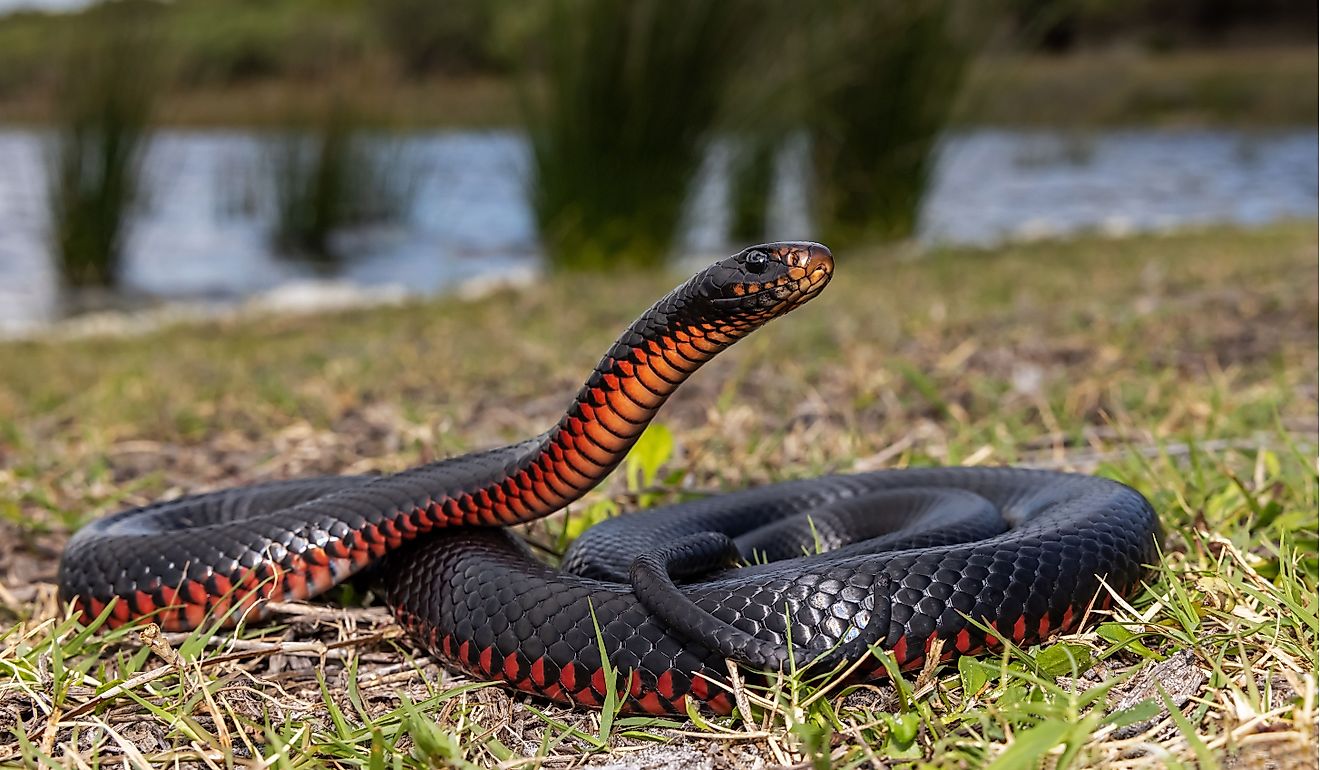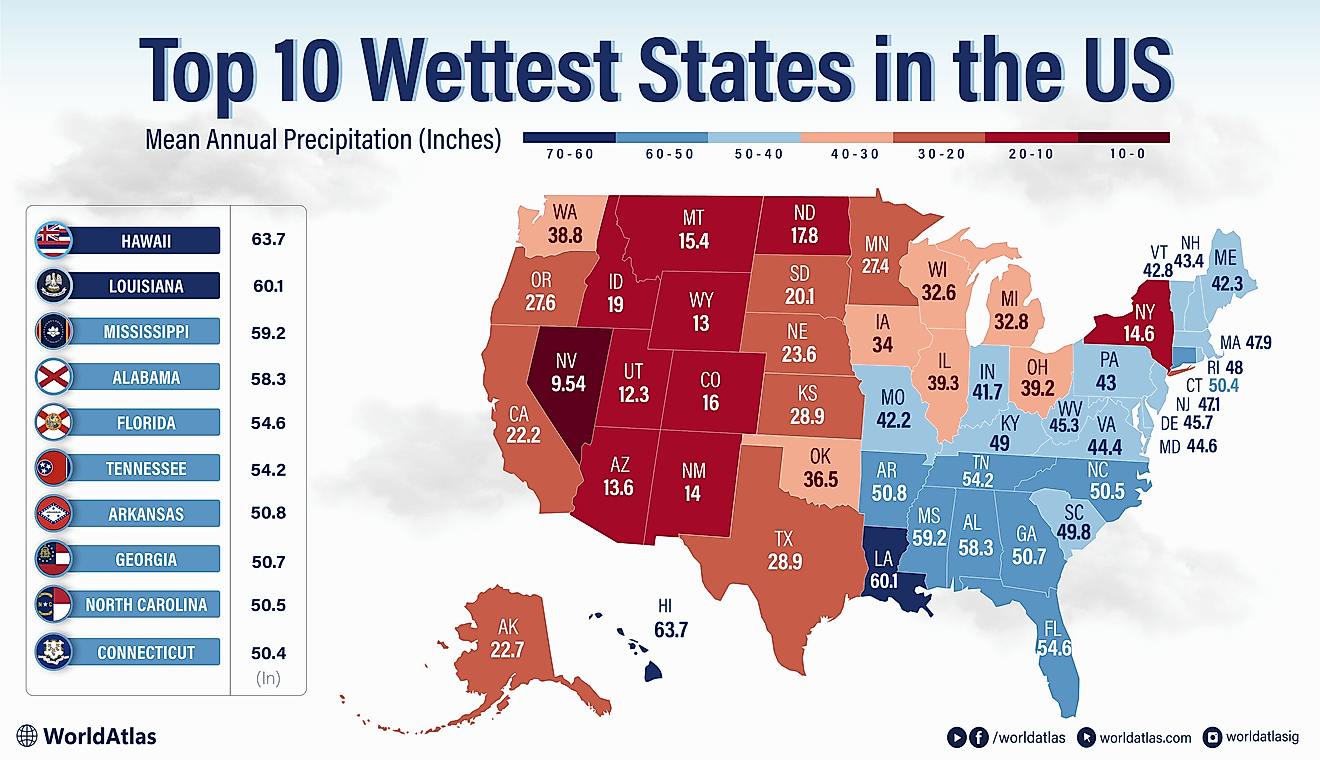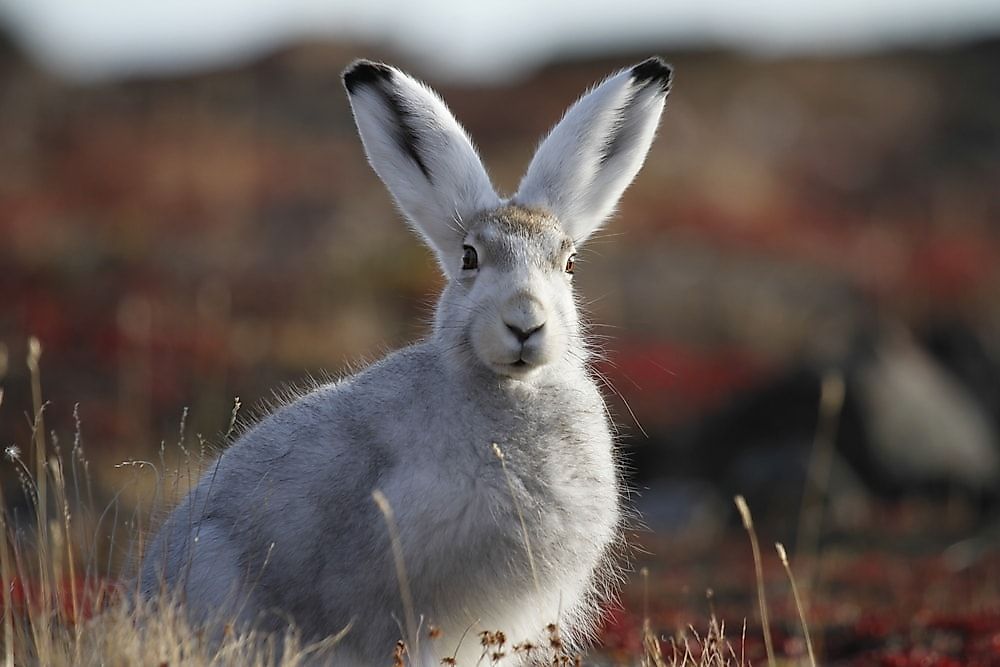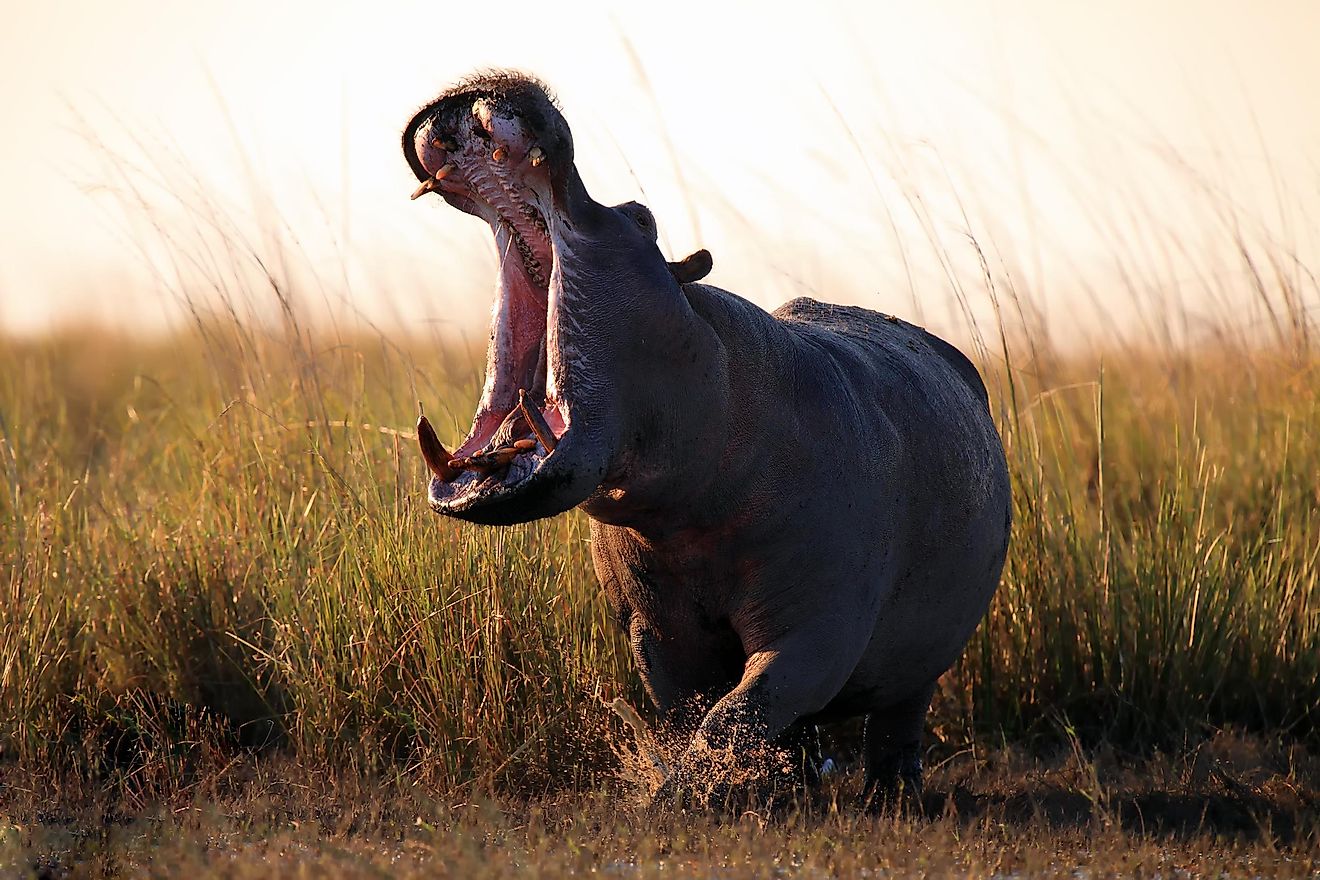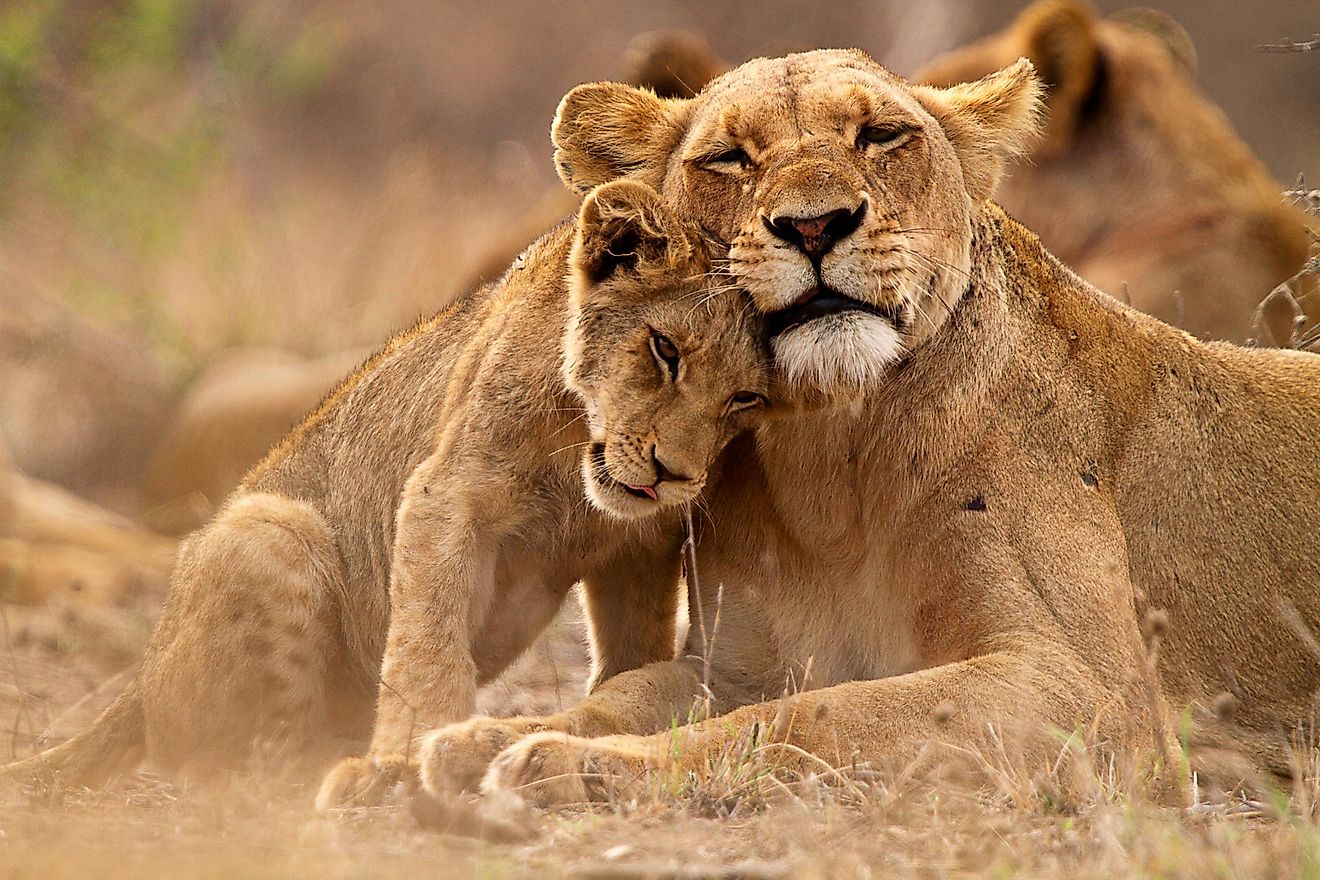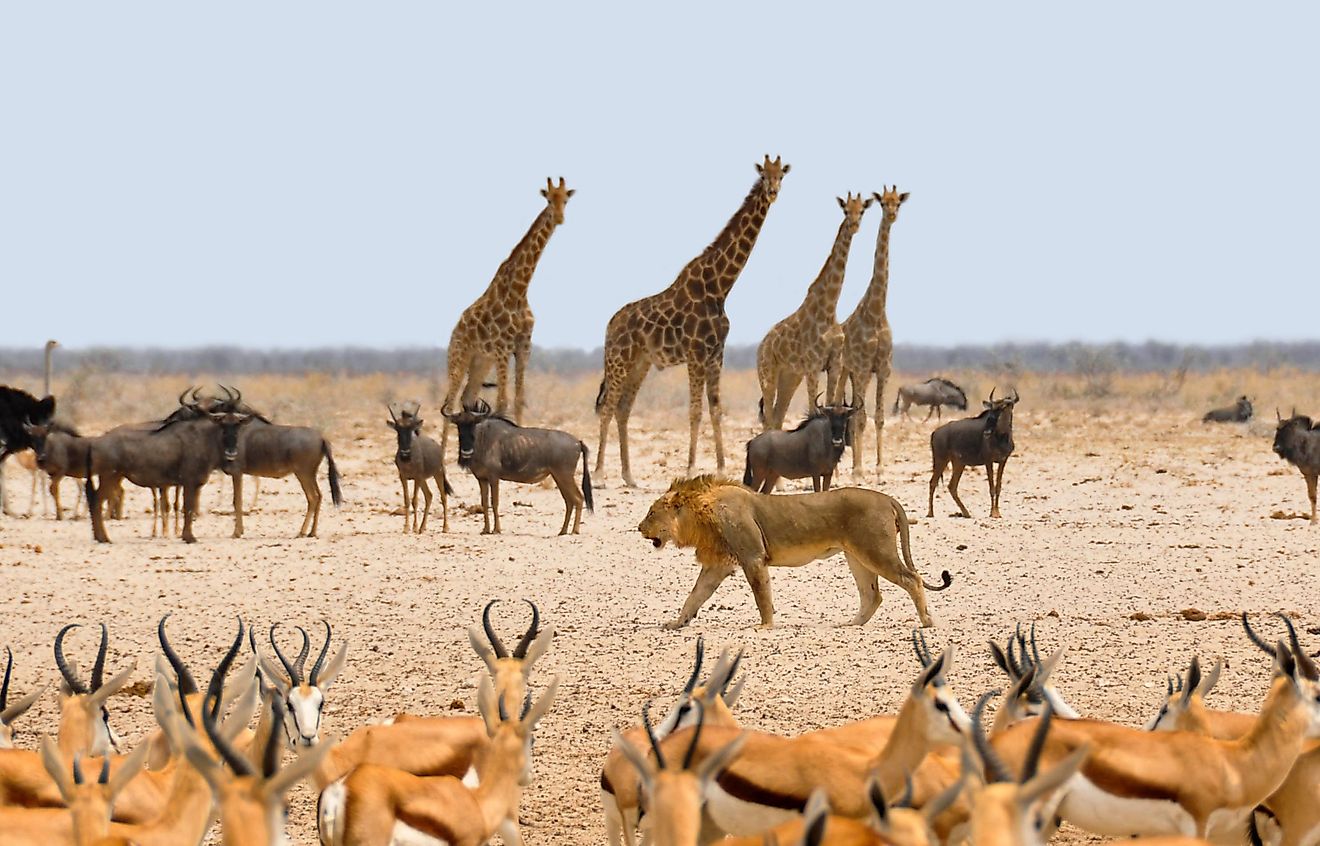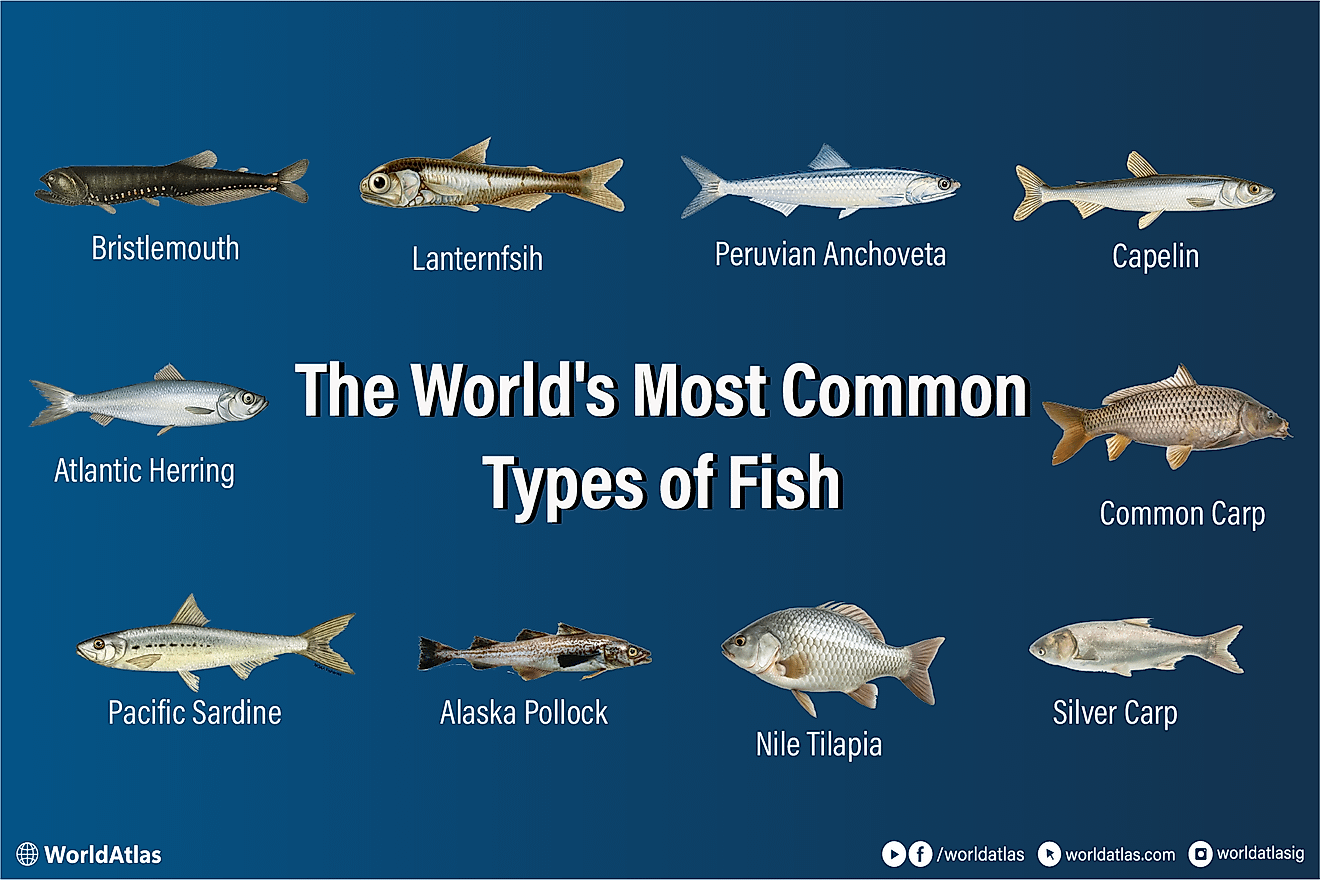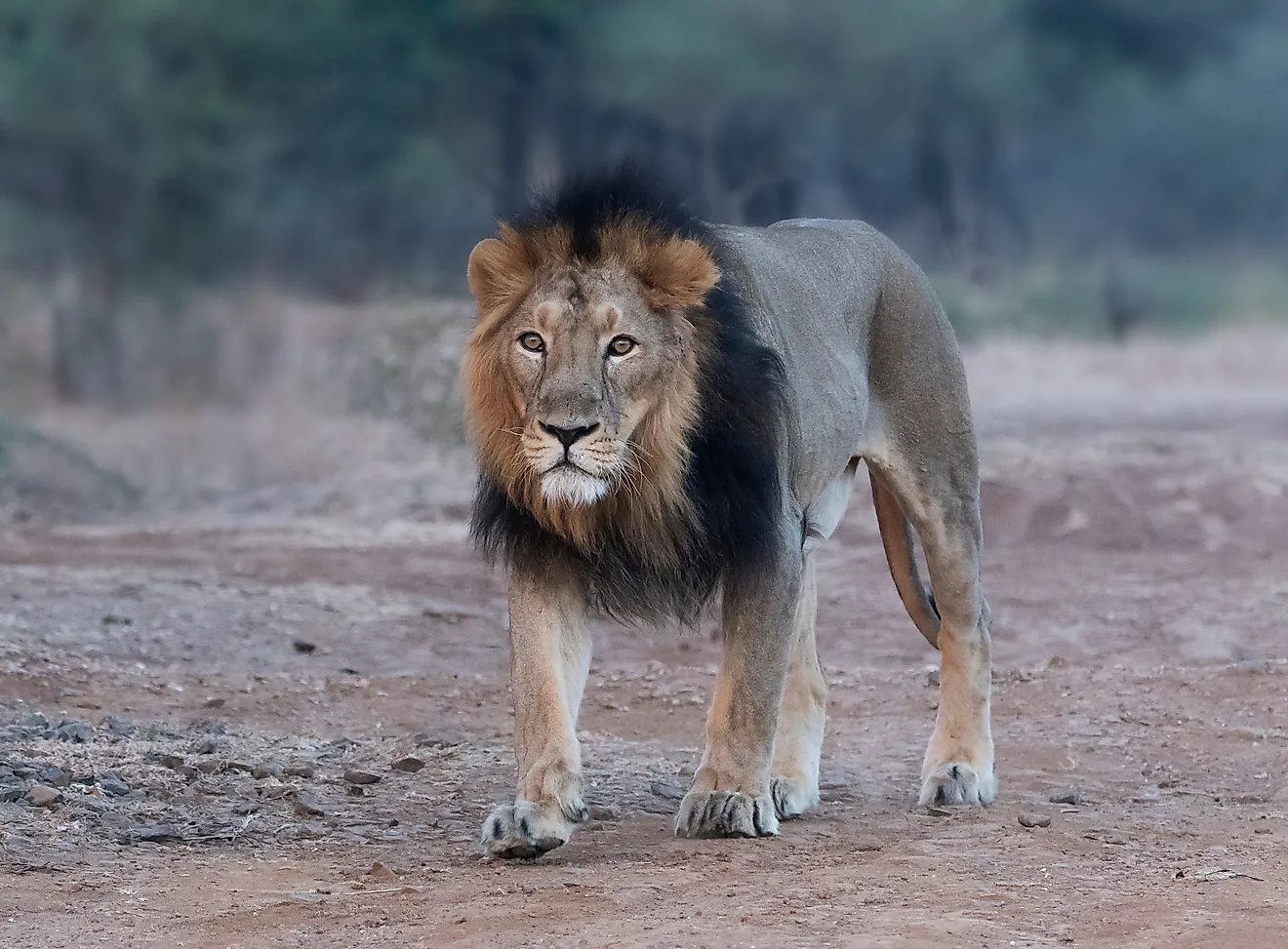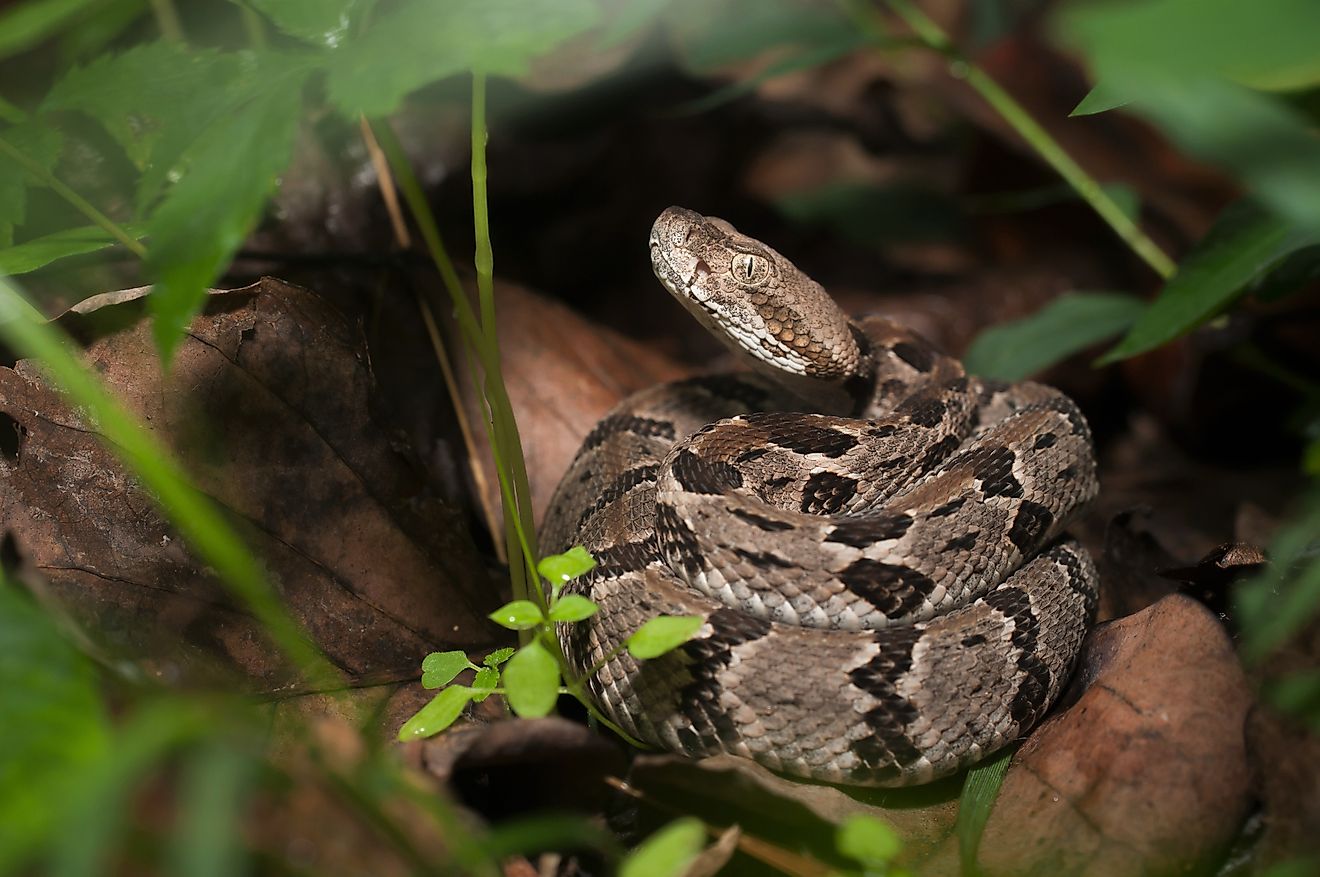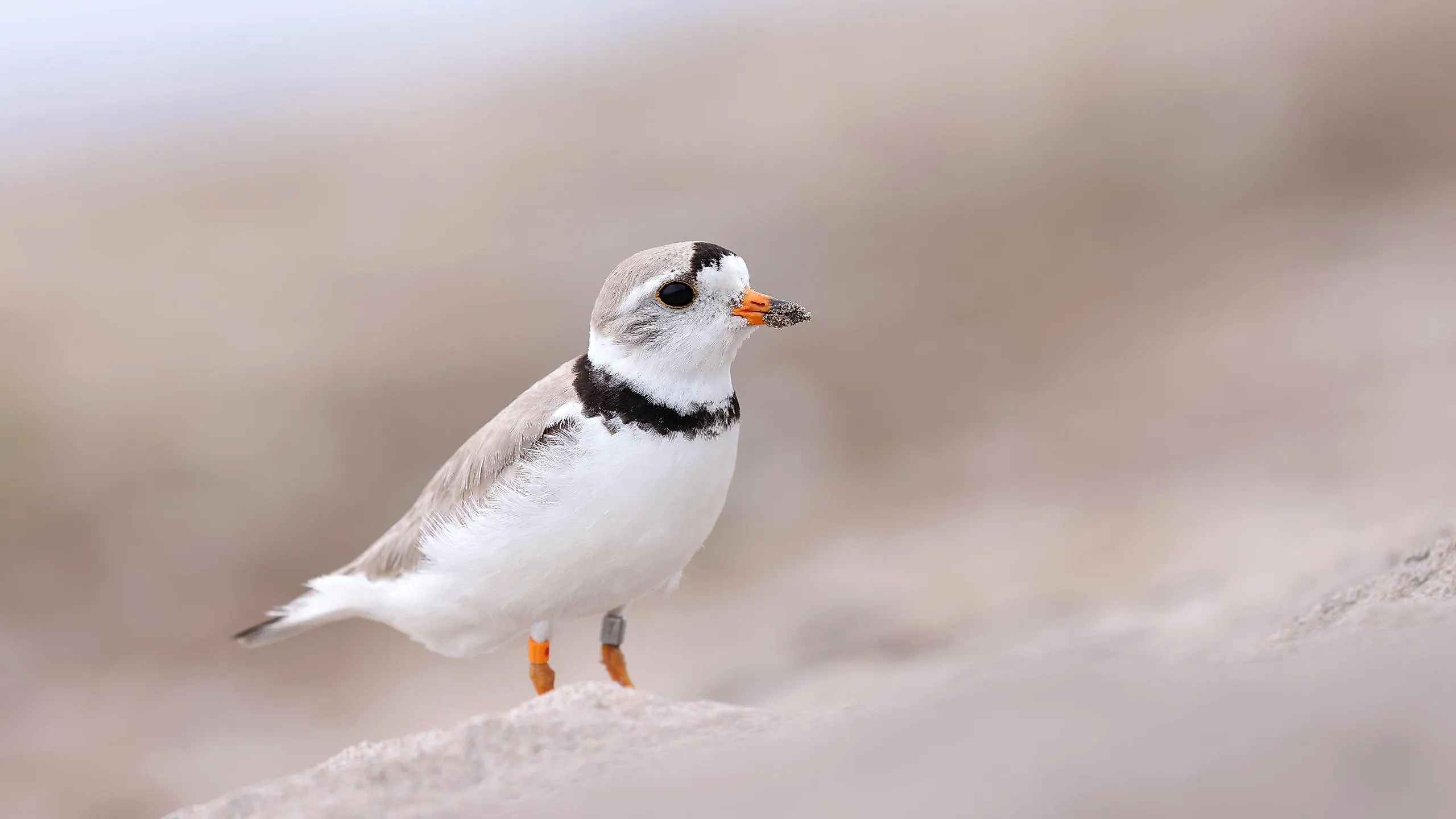
5 Endangered Animals Fighting For Survival In Connecticut
Connecticut's landscape is home to several creatures teetering on the edge of extinction. From beach-nesting birds to ancient fish older than dinosaurs, these species face mounting threats that have pushed them to the brink. Fortunately, dedicated conservation teams refuse to surrender, and some are using innovative rescue strategies that offer glimpses of hope.
1. Piping Plover: Beach Residents Under Siege
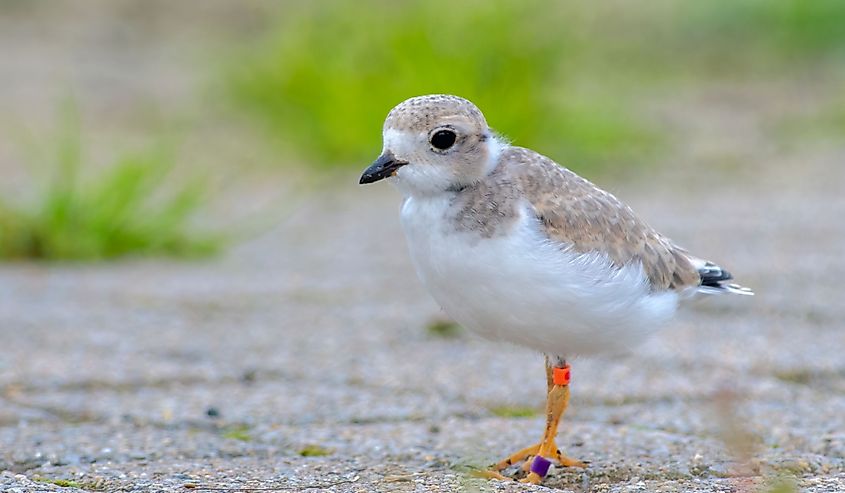
The Struggle
These petite coastal birds sport pale plumage that mirrors beach sand, making them roughly robin-sized. Piping plovers arrive each spring at Connecticut's beaches to nest directly on open sand - the same prime real estate coveted by beachgoers and developers.
These birds once thrived along the Atlantic Coast until the late 1800s, when commercial hunters slaughtered thousands to harvest plumes for fashionable hats during the millinery trade boom. After rebounding in the mid-1900s following hunting bans, plovers crashed again as coastal development exploded and recreational beach use intensified.
Where They Live
The birds require wide, flat stretches of beach with minimal vegetation where they can spot predators approaching. Connecticut hosts roughly a dozen nesting sites scattered along the Long Island Sound shoreline. Each location supports anywhere from a single pair to several breeding couples.
These birds create simple nests by scraping small hollows into beach surfaces, often incorporating nearby shells. Their mottled eggs blend so well with sand that beachgoers may step within inches without noticing. This camouflage protects against natural predators but proves useless against crushing footsteps or beach vehicles.
Why Numbers Plummeted
Multiple pressures converged to devastate plover populations. Waterfront construction eliminated nesting habitat throughout their range. Beach stabilization projects altered natural sand dynamics. Increased human foot traffic disturbed nesting birds, causing nest abandonment.
Unleashed dogs present serious threats, chasing adult birds and trampling nests. Predators, including gulls, crows, foxes, and raccoons, learned to patrol beaches for unprotected eggs and chicks. Climate shifts have intensified storm frequency, washing away nests during critical breeding periods.
The Rescue Mission
The Audubon Alliance for Coastal Waterbirds coordinates protection efforts alongside Connecticut's Department of Energy and Environmental Protection. This partnership deploys teams of trained volunteers who monitor every known nesting location throughout the breeding season.
Conservationists erect symbolic fencing around nesting territories to alert beachgoers. Wire exclosures protect individual nests from predators while allowing adult birds to enter and exit freely. Educational signage explains the birds' protected status and requests that people maintain distance.
Volunteers conduct daily monitoring, tracking nest success and chick survival. When productivity drops below target thresholds, teams intensify predator management and public outreach. This hands-on approach has proven remarkably effective. Connecticut now maintains fifty or more breeding pairs annually, with productivity rates consistently meeting or exceeding federal recovery goals.
2. Bog Turtle: Vanishing Wetland Guardian
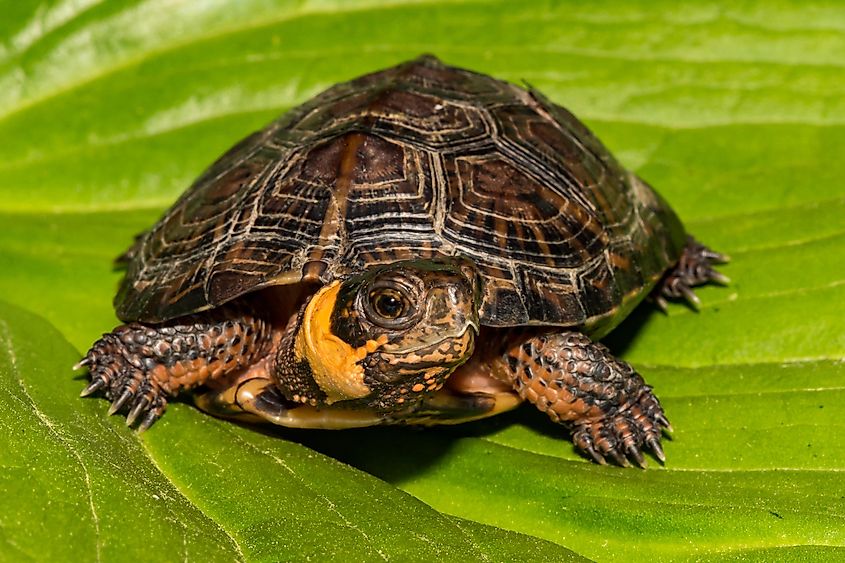
The Struggle
This species holds the record as North America's most diminutive turtle, with adults rarely exceeding palm-sized dimensions of three to four inches. Bog turtles inhabit specialized wetland ecosystems that once dotted Connecticut's western valleys but have largely disappeared under parking lots and subdivisions.
These diminutive reptiles require very specific conditions to survive. Their wetlands must contain open, sunny areas for basking alongside dense vegetation providing cover. Water levels must remain stable year-round. Most critically, the soil chemistry needs particular calcium content found only in certain geological formations.
Where They Live
Bog turtles occupy a narrow band of territory in Connecticut's western counties, where limestone bedrock creates the alkaline wetland conditions they require. These sites include spring-fed meadows, sedge bogs, and wet pastures—landscapes that appear unremarkable to casual observers but represent irreplaceable habitat for specialized species.
The turtles exhibit remarkable site fidelity, often spending their entire forty-to-fifty-year lifespan within a few acres. They burrow into muddy substrate during winter hibernation and emerge in spring to forage for insects, worms, and slugs.
Why Numbers Plummeted
Wetland drainage for agriculture and development destroyed an estimated eighty-five percent of bog turtle habitat across their range. The remaining sites have become fragmented islands separated by impassable development, preventing genetic exchange between populations.
Invasive plants like purple loosestrife transformed open wetland meadows into impenetrable thickets unsuitable for turtles. Road construction bisected habitat patches, creating deadly barriers where dispersing turtles meet vehicles.
Perhaps most insidiously, the illegal pet trade targets bog turtles relentlessly. Collectors prize their small size and the bright yellow and orange markings on their heads. Poaching pressure intensified as populations declined and rarity increased black market value. Removing even a few breeding adults from already tiny populations can trigger irreversible collapse.
The Rescue Mission
The Natural Resources Conservation Service established bog turtles as a priority species under the Working Lands for Wildlife initiative. This program partners with private landowners—who control most remaining habitat—to implement conservation practices that benefit both turtles and agricultural operations.
Conservationists work with farmers to install livestock fencing that protects wetlands from trampling while maintaining productive pasturelands. Alternative watering systems keep cattle out of critical turtle areas. Teams remove invasive vegetation and restore natural hydrology through careful water management.
Since launching this initiative, partners have secured protection for eighty-three occupied wetlands—representing forty-five percent of the habitat needed to achieve recovery goals. Additional conservation easements safeguard surrounding landscapes, creating buffer zones that support turtle movements between sites.
3. Northern Long-Eared Bat: Disease Devastating Populations
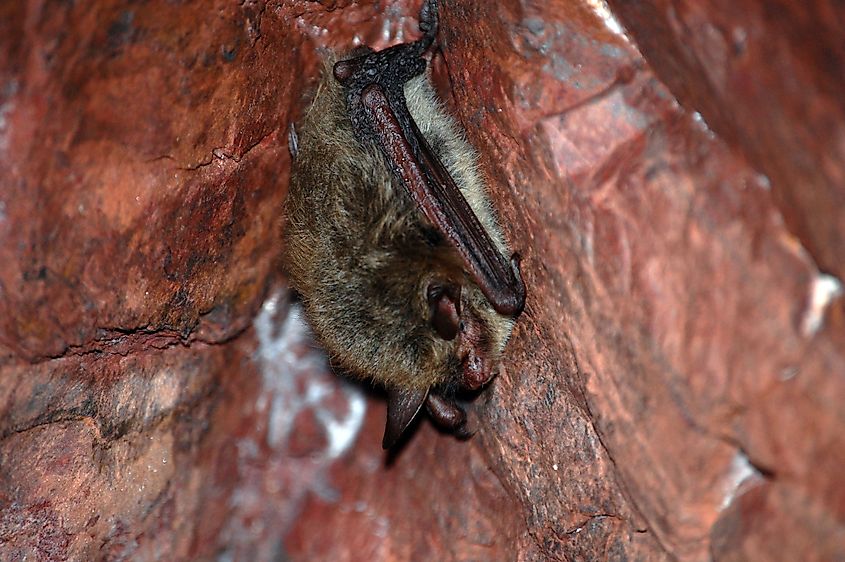
The Struggle
Beginning in the mid-2000s, a deadly fungal pathogen began spreading through bat colonies across the continent. Population surveys revealed staggering mortality rates—some hibernation sites lost nearly all their inhabitants within a few years, prompting federal officials to upgrade its status from threatened to endangered in 2022.
The species takes its name from ear size, which are proportionally longer than those of similar bat species. They once ranked among the most common species hibernating in northeastern caves and abandoned mines. Within a decade, they had nearly disappeared from historic strongholds.
Where They Live
Summer habitat centers on forest areas with standing dead timber, where bark separates from trunks to create roosting spaces. Females form small maternity colonies while raising young. Males typically roost alone.
Winter transforms their behavior entirely. The bats congregate in underground hibernation sites where temperatures remain stable and cold. Connecticut's limited cave systems mean many state residents hibernate in caves located in neighboring states, making interstate cooperation essential for protection.
Why Numbers Plummeted
White-nose syndrome derives its name from the pale fungal growth visible on infected bats. The pathogen thrives in the chilly conditions where bats hibernate, and it proved devastatingly effective against naive North American bat populations. The pathogen colonizes wing membranes and facial skin during hibernation, disrupting normal physiological functions.
The infection forces bats to wake repeatedly, draining fat reserves needed to survive winter. Many starve before winter ends. Others emerge too early and freeze or find no food available.
The fungus spreads rapidly through direct bat-to-bat contact in crowded hibernation sites. Humans inadvertently transport spores between caves on clothing and equipment, accelerating the disease's geographic expansion.
Wind energy development compounds population pressures. Bats collide with turbine blades during migration and foraging flights. While mortality from turbines represents a small fraction compared to disease losses, every additional death matters for species hovering near extinction.
The Rescue Mission
Federal wildlife officials coordinate a nationwide response network bringing together more than 150 partner organizations spanning government agencies, universities, and conservation groups. Researchers pursue multiple treatment strategies simultaneously.
Scientists test antifungal chemicals applied directly to hibernating bats or to cave surfaces. Some experimental treatments show promise in laboratory settings but require further development before widespread deployment. Other teams investigate whether probiotic bacteria naturally present in bat skin microbiomes might inhibit fungal growth.
Conservationists protect and monitor surviving populations, hoping remnant individuals possess genetic resistance that could form the foundation for recovery. Habitat protection efforts focus on preserving roosting trees and limiting disturbance at the few remaining hibernation sites where bats persist.
4. Atlantic Sturgeon: Ancient Fish Rediscovering Home
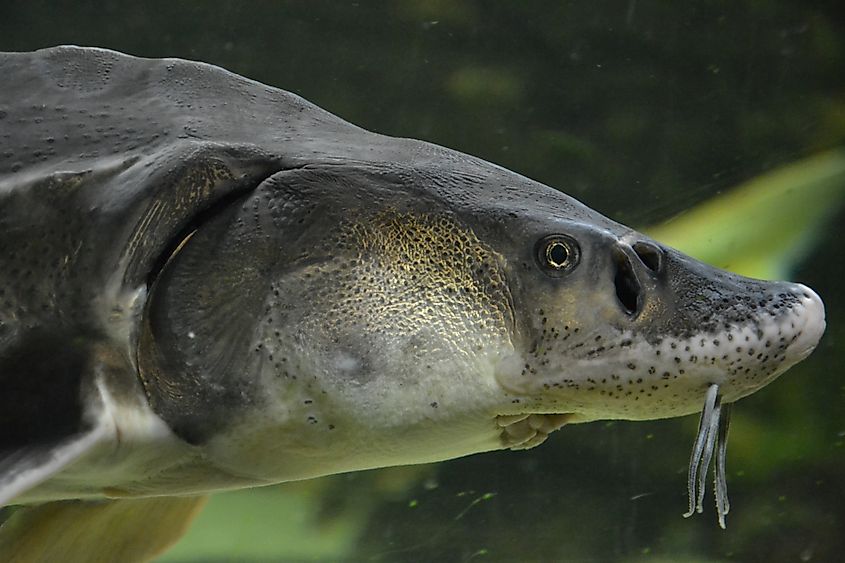
The Struggle
Sturgeon lineage dates back 160 million years, surviving dinosaurs and multiple global catastrophes. Yet humanity nearly erased them within a single century through overfishing and habitat destruction.
Atlantic sturgeon once migrated up the Connecticut River in massive spawning runs. Colonial-era accounts described spawning runs so thick with fish that boats had difficulty navigating through the masses. By the mid-twentieth century, they had virtually vanished from the river, victims of an insatiable caviar market and impassable dams blocking access to historic breeding grounds.
Where They Live
Sturgeon have complex life cycles: adults feed in the ocean but return to rivers to spawn. When breeding urge strikes—every three to five years for mature individuals—they navigate hundreds of miles back to the freshwater rivers where they hatched.
The Connecticut River once provided extensive spawning habitat in its upper reaches. During spawning events, females release enormous quantities of adhesive eggs—numbering in the millions—which attach to rocky substrate in river channels. After hatching, juvenile sturgeon remain in freshwater for several years before migrating downstream to begin their ocean phase.
Why Numbers Plummeted
Commercial fishing pressure in the late 1800s and early 1900s targeted sturgeon populations mercilessly. Their eggs commanded premium prices as caviar, while their meat supplied food markets. Populations crashed coast-wide as fisheries extracted individuals faster than populations could replace them.
Dam construction severed rivers, preventing sturgeon from reaching their spawning grounds upstream. Even where fish could theoretically pass barriers, degraded water quality made upstream reaches unsuitable for eggs and larvae. Dredging operations destroyed critical benthic habitat.
Vessel strikes kill sturgeon in shipping channels and harbors. Fishing nets entangle them as bycatch despite targeted fishing bans. These ongoing mortality sources compound recovery challenges for populations already reduced to remnant levels.
The Rescue Mission
State biologists deployed an underwater tracking network using sound-based technology to monitor fish movements throughout the Connecticut River and Long Island Sound. Researchers surgically implant tiny transmitters in captured sturgeon, then release the fish to resume their migrations.
Underwater receivers strategically positioned at intervals along the river automatically detect and record each tagged individual swimming past. This network reveals previously unknown movement patterns and habitat use, informing protection strategies.
A turning point arrived during 2014 sampling efforts when researchers netted young fish bearing genetic signatures matching the Connecticut River population. Subsequent years have yielded additional young fish, suggesting sturgeon may be rediscovering ancestral spawning sites.
University of Connecticut scientists partnered with state biologists to analyze tissue samples from captured juveniles, confirming their Connecticut River origins through genetic testing. Continued monitoring documents gradual population recovery, though numbers remain precariously low compared to historic abundance.
5. Timber Rattlesnake: Overcoming Fear and Persecution
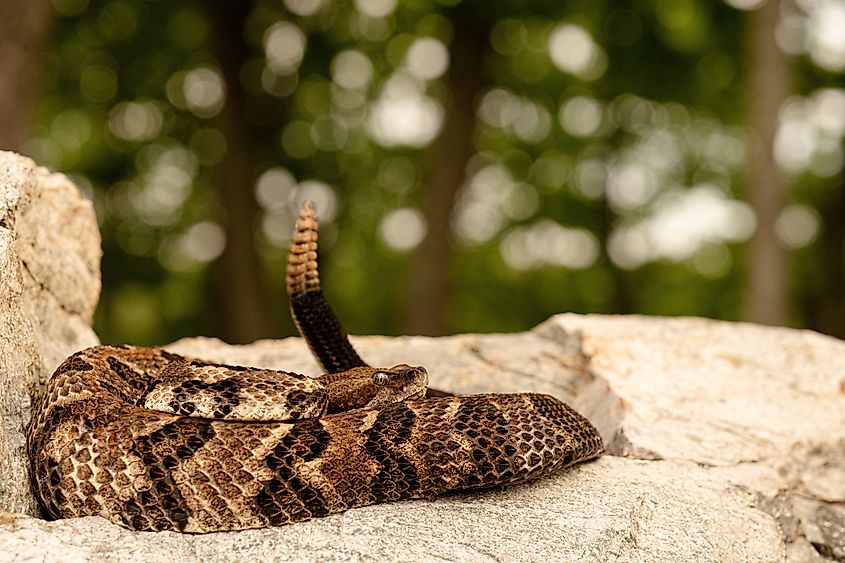
The Struggle
This venomous reptile faces a threat no natural predator poses—the deep-seated fear many people harbor toward snakes. Timber rattlesnakes trigger visceral reactions that often end with the snake dead, despite legal protections and ecological importance.
These heavy-bodied pit vipers once ranged throughout Connecticut's forests, as evidenced by numerous geographic features still bearing "rattlesnake" in their names. During the 18th and 19th centuries, municipalities offered cash payments to anyone delivering dead rattlesnakes, incentivizing systematic extermination. Towns held rattlesnake hunts where participants competed to kill the most individuals.
Where They Live
They need forests with cover and rocky outcrops for dens and basking. Connecticut's remaining populations cling to existence in roughly ten towns scattered across western and central regions, inhabiting only areas offering suitable hibernation dens.
During winter, rattlesnakes congregate in underground crevices, sometimes sharing dens with other snake species. Communal denning helps maintain body temperature but makes populations vulnerable—a single den might shelter the majority of snakes from an entire region.
Summer finds rattlesnakes dispersed through forests, where they hunt by ambush. Coiled motionless beside rodent trails, they detect approaching prey through heat-sensing facial pits and strike with lightning speed.
Why Numbers Plummeted
Intentional killing devastated populations. Even after bounties ended, many people killed rattlesnakes on sight out of fear or misplaced belief that they were eliminating danger. Habitat loss fragmented remaining populations, isolating groups too small to maintain genetic diversity.
Vehicle strikes kill individuals traveling between seasonal habitats, with roads acting as deadly barriers, fragmenting populations. Development pressure in areas surrounding known den sites threatens the undisturbed forest buffers that rattlesnakes require. A single housing development placed poorly can eliminate access to critical resources.
Illegal collection for the pet trade removes breeding adults from already diminished populations. Despite federal and state protections making such collection criminal, enforcement proves challenging in remote forested locations.
Emerging disease threats add new concerns. Snake fungal disease has been detected in some rattlesnakes in Connecticut. Scientists are racing to understand whether this pathogen might trigger population collapses similar to those that have devastated bat populations.
The Rescue Mission
Biologists implant miniature radio transmitters in captured snakes, then track individuals twice weekly to map movements and den sites. This intensive monitoring reveals home ranges, seasonal movement patterns, den locations, and preferred hunting areas. Data guides habitat management decisions and helps identify critical parcels needing protection.
Education programs have proven essential for changing attitudes. In Glastonbury, biologist Doug Fraser spent decades conducting one-on-one conversations with residents, transforming a community that once feared rattlesnakes into active participants in their protection. This grassroots approach demonstrates that coexistence is possible when people understand rattlesnake behavior and ecological roles.
Roger Williams Park Zoo maintains a captive assurance colony of New England timber rattlesnakes. This program provides insurance against catastrophic population losses while supporting research into disease treatment and reproductive biology.
The Path Forward
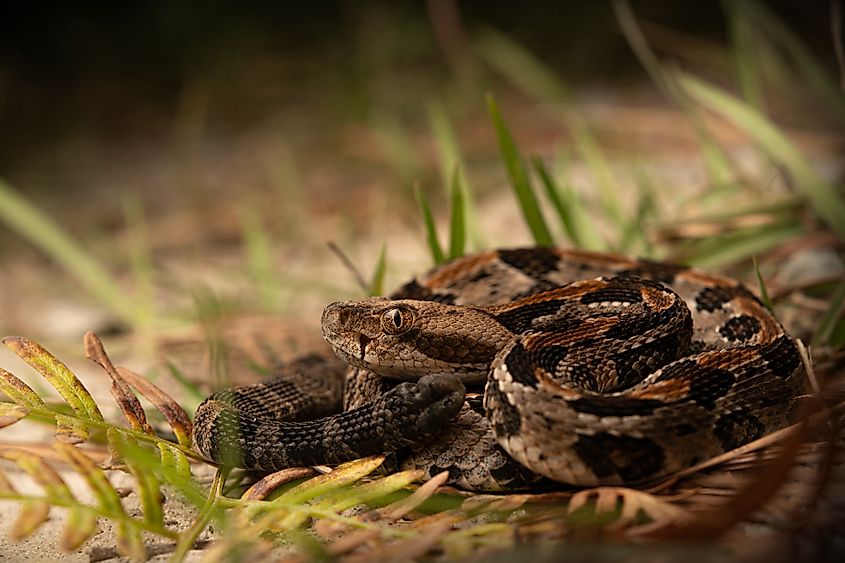
Recovery success demands long-term thinking. Some species take decades to reproduce, with sturgeon requiring roughly twenty years to reach breeding age. Bog turtles may live for fifty years but produce few offspring annually. Northern long-eared bats will not recover until researchers develop effective treatments for white-nose syndrome.
The financial investment required pales in comparison to the cost of a permanent loss. Once extinction occurs, no amount of money can restore what evolution created over millions of years. Connecticut's endangered species programs show that targeted, science-based action can reverse declines.
Public engagement is equally critical. Volunteers monitoring piping plover nests, landowners protecting bog turtle wetlands, and communities learning to coexist with rattlesnakes all provide invaluable support. Conservation succeeds when it becomes a shared effort rather than only a government task.
These five species represent just a fraction of Connecticut's imperiled biodiversity. Dozens more plants and animals remain at risk, waiting for the attention and resources needed to secure their future. Each loss weakens the intricate web of life that ultimately supports human existence. Protecting them protects the future of Connecticut’s natural heritage.
